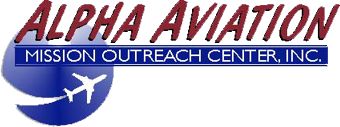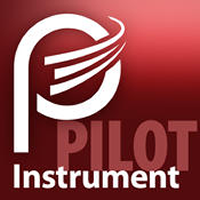Instrument Pilot
The Instrument Pilot Certification is for students who have completed the Private Pilot or Commercial Pilot Certification Program.
It will allow the student to obtain the knowledge, skill, and experience necessary to meet the requirements to operate aircraft in Instrument Meteorological Conditions (IMC) in accordance with Federal Aviation Administration Regulations (FAR).
 The Instrument Rating is probably the most important flying course that you will ever take. The instrument rating will permit the licensed pilot to operate a single-engine airplane in IMC. While most flying is done “on top”, in blue skies and sunshine, the instrument pilot is prepared for flight in the clouds from take-off till touchdown. For a full-time trainee, this 40 hour course could be completed in as little as 30 days, including the ground prep and written test.
The Instrument Rating is probably the most important flying course that you will ever take. The instrument rating will permit the licensed pilot to operate a single-engine airplane in IMC. While most flying is done “on top”, in blue skies and sunshine, the instrument pilot is prepared for flight in the clouds from take-off till touchdown. For a full-time trainee, this 40 hour course could be completed in as little as 30 days, including the ground prep and written test.
Instrument rating requirements (FAR AIM Sec. 61.65) :
General: A person who applies for an instrument rating must:
- Hold at least a current private pilot certificate with an airplane, helicopter, or powered-lift rating appropriate to the instrument rating sought;
- Be able to read, speak, write, and understand the English language. If the applicant is unable to meet any of these requirements due to a medical condition, the Administrator may place such operating limitations on the applicant’s pilot certificate as are necessary for the safe operation of the aircraft;
- Receive and log ground training from an authorized instructor or accomplish a home-study course of training on the aeronautical knowledge areas of paragraph (b) of this section that apply to the instrument rating sought;
- Receive a logbook or training record endorsement from an authorized instructor certifying that the person is prepared to take the required knowledge test;
- Receive and log training on the areas of operation of paragraph (c) of this section from an authorized instructor in an aircraft, flight simulator, or flight training device that represents an airplane, helicopter, or powered-lift appropriate to the instrument rating sought;
- Receive a logbook or training record endorsement from an authorized instructor certifying that the person is prepared to take the required practical test;
- Pass the required knowledge test on the aeronautical knowledge areas of paragraph (b) of this section; however, an applicant is not required to take another knowledge test when that person already holds an instrument rating; and
- Pass the required practical test on the areas of operation in paragraph (c) of this section in —
- An airplane, helicopter, or powered-lift appropriate to the rating sought; or
- A flight simulator or a flight training device appropriate to the rating sought and for the specific maneuver or instrument approach procedure performed. If an approved flight training device is used for the practical test, the instrument approach procedures conducted in that flight training device are limited to one precision and one nonprecision approach, provided the flight training device is approved for the procedure performed.
Aeronautical knowledge: A person who applies for an instrument rating must have received and logged ground training from an authorized instructor or accomplished a home-study course on the following aeronautical knowledge areas that apply to the instrument rating sought:
- Federal Aviation Regulations of this chapter that apply to flight operations under IFR;
- Appropriate information that applies to flight operations under IFR in the “Aeronautical Information Manual;”
- Air traffic control system and procedures for instrument flight operations;
- IFR navigation and approaches by use of navigation systems;
- Use of IFR en route and instrument approach procedure charts;
- Procurement and use of aviation weather reports and forecasts and the elements of forecasting weather trends based on that information and personal observation of weather conditions;
- Safe and efficient operation of aircraft under instrument flight rules and conditions;
- Recognition of critical weather situations and windshear avoidance;
- Aeronautical decision making and judgment; and
- Crew resource management, including crew communication and coordination.
Flight proficiency: A person who applies for an instrument rating must receive and log training from an authorized instructor in an aircraft, or in a flight simulator or flight training device, in accordance with paragraph (e) of this section, that includes the following areas of operation:
- Preflight preparation;
- Preflight procedures;
- Air traffic control clearances and procedures;
- Flight by reference to instruments;
- Navigation systems;
- Instrument approach procedures;
- Emergency operations; and
- Postflight procedures.
Aeronautical experience: A person who applies for an instrument rating must have logged the following:
- A total of 40 hours of actual or simulated instrument time on the areas of operation of this section, to include —
- At least 15 hours of instrument flight training from an authorized instructor in the aircraft category for which the instrument rating is sought;
- At least 3 hours of instrument training that is appropriate to the instrument rating sought from an authorized instructor in preparation for the practical test within the 60 days preceding the date of the test;
- For an instrument — airplane rating, instrument training on cross- country flight procedures specific to airplanes that includes at least one cross-country flight in an airplane that is performed under IFR, and consists of —
- A distance of at least 250 nautical miles along airways or ATC-directed routing;
- An instrument approach at each airport; and
- Three different kinds of approaches with the use of navigation systems;
- For an instrument — helicopter rating, instrument training specific to helicopters on cross-country flight procedures that includes at least one cross-country flight in a helicopter that is performed under IFR, and consists of —
- A distance of at least 100 nautical miles along airways or ATC-directed routing;
- An instrument approach at each airport; and
- Three different kinds of approaches with the use of navigation systems; and
- For an instrument — powered-lift rating, instrument training specific to a powered-lift on cross-country flight procedures that includes at least one cross-country flight in a powered-lift that is performed under IFR and consists of —
- A distance of at least 250 nautical miles along airways or ATC-directed routing;
- An instrument approach at each airport; and
- Three different kinds of approaches with the use of navigation systems.
- At least 50 hours of cross-country flight time as pilot in command, of which at least 10 hours must be in airplanes for an instrument — airplane rating
![]()
Ready to take the next step to start your flight training, or just have some questions? Contact us Today! and we will be more than happy to help!
Tags: instrument, Pilot, training

